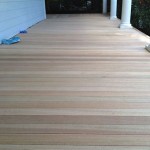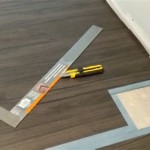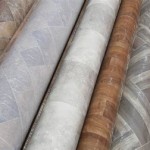```html
House Wood Flooring: A Comprehensive Guide
House wood flooring represents a significant investment in a property, impacting its aesthetic appeal, resale value, and overall comfort. Choosing the right type of wood flooring requires careful consideration of factors such as budget, lifestyle, desired aesthetic, and the specific characteristics of the wood itself. This article provides a comprehensive overview of house wood flooring, covering various types, their advantages and disadvantages, installation considerations, and maintenance requirements.
Types of Wood Flooring
Wood flooring categorizes broadly into two main types: solid wood flooring and engineered wood flooring. Each type offers distinct characteristics and suitability for different applications.
Solid Wood Flooring: Solid wood flooring comprises planks milled from a single piece of timber. This construction provides a sense of authenticity and durability. Common wood species used for solid wood flooring include oak, maple, cherry, walnut, and hickory. Each species exhibits unique grain patterns, color variations, and hardness ratings, influencing both the visual appeal and the resistance to wear and tear. Solid wood flooring is typically ¾ inch thick, allowing for multiple sanding and refinishing cycles throughout its lifespan.
The primary advantage of solid wood flooring is its longevity. When properly maintained, it can last for generations. The ability to sand and refinish the surface allows for the removal of scratches, dents, and discoloration, effectively restoring the flooring to its original condition or even changing its appearance with a different stain. Solid wood flooring also contributes to a warmer feeling underfoot compared to materials like tile or stone, offering a more comfortable living environment.
However, solid wood flooring is susceptible to moisture and humidity fluctuations. Significant changes in humidity can cause the wood to expand and contract, potentially leading to warping, cupping, or gapping between planks. Therefore, solid wood flooring is generally not recommended for installation in basements or bathrooms, where moisture levels are typically higher. Furthermore, the installation process for solid wood flooring often requires professional expertise, adding to the overall cost.
Engineered Wood Flooring: Engineered wood flooring consists of multiple layers of wood veneer bonded together. The top layer, known as the wear layer, is made of solid hardwood, providing the visual appeal and tactile feel of solid wood. The underlying layers are typically composed of plywood or high-density fiberboard (HDF), offering dimensional stability and resistance to moisture. The thickness of the wear layer varies, impacting the number of times the flooring can be sanded and refinished.
Engineered wood flooring offers several advantages over solid wood. Its multi-layered construction makes it more resistant to moisture and humidity changes, reducing the risk of warping or cupping. This characteristic allows for installation in a wider range of environments, including basements and areas with radiant heating systems. Engineered wood flooring is also available in a wider variety of installation methods, including glue-down, nail-down, and click-lock systems, offering flexibility in installation and potentially reducing labor costs.
While engineered wood flooring is more resistant to moisture than solid wood, it is not waterproof. Prolonged exposure to water can still damage the flooring. Furthermore, the lifespan of engineered wood flooring is typically shorter than that of solid wood, particularly if the wear layer is thin. The limited number of sanding and refinishing cycles also restricts the ability to restore the flooring to its original condition over time.
The choice between solid wood and engineered wood flooring depends on the specific needs and priorities of the homeowner. Solid wood offers unmatched longevity and the ability to be refinished multiple times, while engineered wood provides greater stability and versatility in installation locations.
Species and Characteristics
The species of wood used for flooring significantly influences its appearance, durability, and cost. Hardwood species are generally preferred for flooring due to their density and resistance to wear. The Janka hardness scale measures the resistance of wood to denting and wear. Higher Janka ratings indicate harder and more durable wood species.
Oak: Oak is a popular and versatile choice for wood flooring. It is available in both red oak and white oak varieties, each offering distinct color tones and grain patterns. Oak is relatively hard and durable, making it suitable for high-traffic areas. Its porous structure allows it to readily accept stains, providing a wide range of color options. Oak is also readily available and relatively affordable compared to some other hardwood species.
Maple: Maple is a light-colored hardwood with a fine, uniform grain. It is known for its hardness and resistance to scratching and denting. Maple flooring provides a clean, contemporary look and is often used in modern homes. However, maple can be more challenging to stain evenly due to its dense grain structure.
Hickory: Hickory is one of the hardest domestic hardwoods, making it an excellent choice for high-traffic areas and homes with pets. It features a unique grain pattern with significant color variations, adding character and visual interest to the floor. Hickory is a durable and long-lasting option, but it can also be more expensive than oak or maple.
Cherry: Cherry is a reddish-brown hardwood that develops a richer, darker patina over time. It is known for its smooth, elegant grain pattern. Cherry flooring adds warmth and sophistication to a room. However, cherry is softer than oak or maple and is more susceptible to denting and scratching.
Walnut: Walnut is a dark-brown hardwood with a distinctive grain pattern. It is a luxurious and elegant choice for wood flooring. Walnut flooring adds warmth and character to a room. Walnut is softer than oak or maple and is more susceptible to denting and scratching, making it better suited for lower traffic areas.
The selection of wood species depends on the desired aesthetic, the level of traffic the flooring will endure, and the homeowner's budget. Considering the Janka hardness rating and the specific characteristics of each species is crucial for making an informed decision.
Installation and Maintenance
Proper installation and regular maintenance are essential for ensuring the longevity and beauty of house wood flooring. The installation method depends on the type of flooring and the subfloor condition. Maintenance involves regular cleaning and preventative measures to protect the flooring from damage.
Installation Methods: Solid wood flooring typically requires nailing or gluing to a wooden subfloor. Engineered wood flooring can be installed using various methods, including nailing, gluing, or floating. Floating installations involve connecting the planks together using a click-lock system, without attaching them to the subfloor. This method is often used for engineered wood flooring and can be easier to install than nailing or gluing.
Proper subfloor preparation is crucial for a successful flooring installation. The subfloor must be level, clean, and dry. Unevenness or moisture can lead to problems with the flooring, such as warping, cupping, or squeaking. A moisture barrier is often recommended, particularly for installations over concrete subfloors.
Professional installation is generally recommended for solid wood flooring and complex engineered wood flooring installations. Experienced installers have the necessary tools and expertise to ensure proper alignment, secure attachment, and a seamless finish.
Maintenance: Regular cleaning is essential for maintaining the appearance and longevity of house wood flooring. Sweep or vacuum the floor regularly to remove dirt, dust, and debris that can scratch the surface. Use a damp mop with a pH-neutral wood floor cleaner to clean the floor. Avoid using excessive water, as it can damage the wood. Dry the floor thoroughly after mopping.
Preventative measures can also help protect wood flooring from damage. Use mats or rugs at entrances to trap dirt and moisture. Place felt pads under furniture legs to prevent scratches. Avoid wearing shoes with high heels or cleats on the floor. Control humidity levels in the home to prevent expansion and contraction of the wood.
Depending on the type of finish and the level of traffic, wood flooring may require occasional refinishing. Refinishing involves sanding the surface to remove scratches, dents, and discoloration, and then applying a new coat of finish. The frequency of refinishing depends on the wear and tear the flooring experiences.
Proper installation and regular maintenance are critical for maximizing the lifespan and beauty of house wood flooring. Following recommended cleaning practices and taking preventative measures can help protect the flooring from damage and ensure its long-term performance.
```
Are There Wood Floors In Your House

Hardwood Flooring Pros And Cons Forbes Home

Types Of Hardwood Floors The Home Depot

Types Of Hardwood Flooring Forbes Home

Do Hardwood Floors Increase Home Value Roi Cost

How Hard Can It Be To Choose A Hardwood Floor The New York Times

Which Direction Should The Floor Be Laid Real Wood Floors

Hardwood Flooring The Home Depot

How To Choose The Right Wooden Flooring Cost Maintenance Lifespan

Upgrading Your Floors The Pros And Cons Of 5 Popular Flooring Choices
Related Posts








